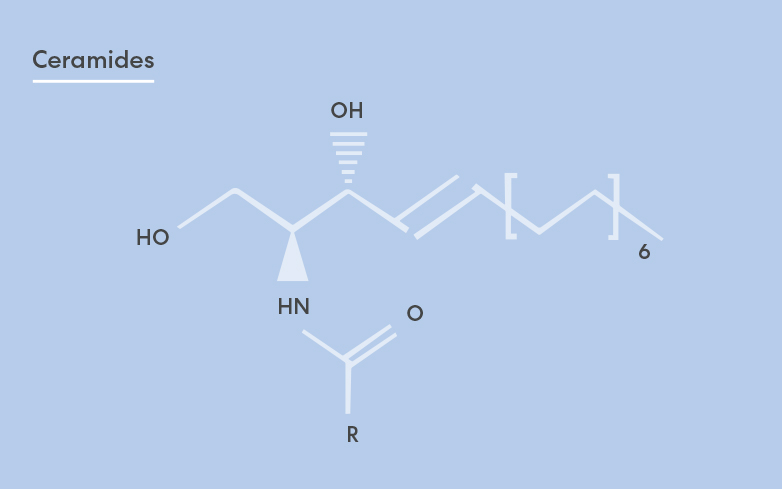Ceramides: An Essential Ingredient for Beautiful, Healthy-Looking Skin

Our skin is a highly complex organ, but if you were to break it down into its two primary building blocks, you’d get proteins (such as collagen, elastin and keratin) and lipids (like ceramides). These elements abound when we’re babies and into early adulthood. But by the time we hit our late 20s, these important building blocks start dissipating. We produce less naturally, but environmental factors such as pollution, free radicals and UV rays expedite depletion. In the end, this leads to all those well-known signs of aging, including skin laxity, wrinkles and a dry, dull complexion.
While we’re all about facing and embracing the natural aging process, but to prevent premature, environmentally induced aging, it’s important to apply sunscreen and antioxidants daily, and incorporate ceramides, a fundamental building block of skin, into your regimen.
Ceramides are a vital component that make up 50% of our skin barrier. In short, they’re lipids — or fat molecules — that hold the uppermost layer of our skin together. If you think of proteins as bricks, then ceramides are the mortar. Obviously the bricks are important, but they’d fall apart without the glue.
What are Ceramides?
“Ceramides help the skin retain moisture and help protect us from exposure to environmental irritants like pollution, chemicals and harsh weather,” says Dr. Nina Desai, a board-certified dermatologist based in Manhattan. “Simply put, our body makes ceramides to keep our skin healthy. If there is a lack of ceramides, the barrier function of the skin becomes compromised, which may result in dryness, irritation and inflammation.”
Tell Me About Ceramides for Skincare…
Pretty much anyone over the age of 20 is susceptible to experiencing low levels of ceramides. Starting around that time, we lose ceramides at a rate of 1% every year. Additionally, anyone who battles skin conditions where ceramide function is decreased — such as eczema, atopic dermatitis, rosacea, and even acne — can benefit from using this ingredient regularly.
Whether a result of natural aging, premature aging, or a skin condition, a decrease in ceramides means our body cannot retain the amount of moisture it needs to remain healthy. The fancy dermatologist term for this is transepidermal water loss or TEWL, says Dr. Desai. When we experience TEWL, skin feels dry and dehydrated and, over time, can look less plump and more wrinkled. A compromised skin barrier also turns into a circular issue since your skin is less able to shield you from irritants and allergens.
“Ceramides are unique skincare ingredients that have the ability to keep our skin looking healthy and youthful. Products that add ceramides back to the skin have taken the science of skincare to a new level,” says Dr. Desai.
When to Apply Ceramide Cream
Ceramides can be used both in the morning and evening, and Dr. Desai says they’re “most effective when combined with other skin-replenishing ingredients, such as fatty acids, glycerin, and cholesterol.”
For example, SMOOTHNESS Bare Haven Soft Moisturizer combines glycerin with a ceramide and peptide blend to boost moisture by up to 191% throughout the day. The result is skin that feels and looks hydrated, soft, supple, and healthy.
Dr. Desai also recommends applying a thicker cream with ceramides immediately after using exfoliating ingredients, including retinoids, enzymes, AHAs and BHAs. For a super indulgent option, try BUTTER DRENCH Restorative Rich Cream, which marries ceramides, shea butter, glycerin and peptides. This one’s ideal for dry and/or mature skin types, and for use throughout the fall and winter when the air is less humid.
For a lighter option — which is best for hot/humid weather and for those with naturally oil-prone or combination skin — try a gel cream. A bouncy, water-based hydrator will boost moisture levels without feeling heavy on your face.
Whatever form your ceramides come in, know that you’re doing your skin a major favor when applying them on a regular basis.





